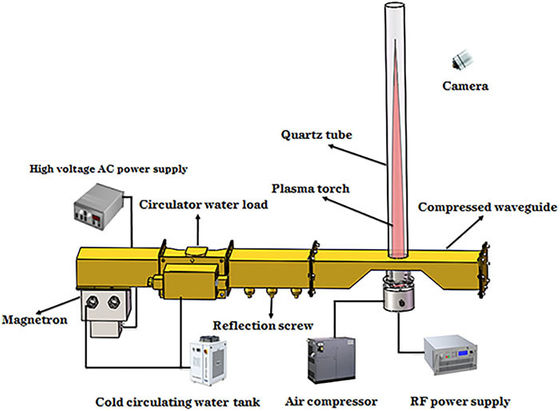A prototype of an aircraft jet engine that does not use fossil fuel is announced

Human beings rely on fossil fuels such as gasoline for transportation, but fossil fuels have the problems of 'producing greenhouse gases' and 'reserves are limited.' A research team at the Wuhan University Institute of Technology Science has announced a prototype of a jet propulsion device for aircraft that is driven solely by electricity, which does not require fossil fuel.
Jet propulsion by microwave air plasma in the atmosphere: AIP Advances: Vol 10, No 5
Fossil fuel-free jet propulsion with air plasmas | EurekAlert! Science News
https://www.eurekalert.org/pub_releases/2020-05/aiop-ffj050420.php
Microwave thruster makes for clean-burning jet | Ars Technica
https://arstechnica.com/science/2020/05/microwave-thruster-makes-for-clean-burning-jet/
The conventional jet engine burns oxygen and fossil fuel contained in the taken-in air to generate thermal energy, and this thermal energy heats and expands the combustion gas to obtain thrust. In other words, fossil fuels are used in jet engines to 'generate thermal energy'.
A research team at the Institute of Technology and Science, Wuhan University, created a jet engine prototype that 'generates this heat energy from plasma.' An engine developed by Wuhan University that does not require fossil fuels compresses air to a high pressure and ionizes it by microwaves to generate thermal energy and generate thrust.
The figure below shows a simple structure of the engine. When driving, a magnetron is used first to generate high-power microwave of 1kW. This microwave creates a very strong electric field near the entrance of the quartz tube, which is joined to the narrowest part of the waveguide. Electrons are removed from nitrogen and oxygen in the compressed air in the process of flowing compressed air toward the quartz tube so as to pass through this electric field, generating low-temperature and low-pressure plasma. The charged particles in the plasma are compressed in the waveguide, causing ions, atoms, and electrons to vibrate, causing frequent collisions and rapidly producing thermal energy.

The superheated plasma forms a torch-shaped flame inside the quartz tube. The output of this flame fluctuates depending on the electric power, and reaches 1000 ° C or higher at the maximum output. The thrust produced by this prototype is 28 N / kW, which is comparable to the jet engine of a commercial aircraft, the research team said.

What was announced this time is just a prototype, and the scale is different from the actual jet engine for aircraft. IT news site Ars Technica pointed out, 'The airflow produced by this prototype is 15,000 times smaller than the actual jet engine, and the thrust and output are also 1/1000 or less,' the book He pointed out that 'multiple problems remain', citing the possibility that the plasma is not stable when the prototype is made to full size.
`` Our design does not require fossil fuels and does not emit carbon that causes greenhouse effects and global warming, '' said Jau Tang, a research team. “The prototype presented this time shows the potential of conventional fossil fuel jet engines. It can be a good alternative. ”
Related Posts:
in Science, Posted by darkhorse_log







